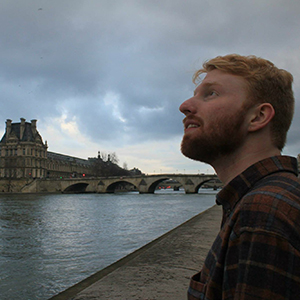Sometimes, it seems like school board members are constantly on the lookout for things to be upset about. In the pursuit of protecting children from what they feel is obscene, many parents and administrators become enraged by books that sometimes fall into the hands of a student. As you are well aware, many classic works of literature were at one time kept off school shelves for one reason or another. We usually realize our mistake, but often it is too late by then. Here are some influential works that should have never been banned in the first place.
The Catcher in the Rye, J.D. Salinger, 1951
Salinger’s tale of teenage self-discovery has been periodically removed from schools for more than half a century. Upset parents and administrators have called the book “blasphemous,” “filthy,” and “obscene." Still, it has been a refuge to millions of teens who don’t feel that they fall into the stereotypical clique culture of society.
The Great Gatsby, F. Scott Fitzgerald, 1925
While it has grown to the label of the Great American Novel, this book has seen its share of backlash. Because of characters engaging in indulgence, both in regards to alcohol and sexual activity, it took decades after the novel’s release before it was taught widely in schools.
Beloved, Toni Morrison, 1987
While some books on this list have become part of standardized curriculum, Beloved continues to enrage parents. Though it won the Pulitzer and is written by one of the most important African American writers in this nation’s history, some still point to the violence and lewd sexual behavior seen in this book.
Fahrenheit 451, Ray Bradbury, 1953
It seems ridiculous that a book about the dangers of censorship would get banned, but sure enough Ray Bradbury’s classic was challenged because of its language that opposed religious teachings, such as the use of the words “hell” and “damn." Its themes warn about a society with restrictions against literature, but I guess some schools missed that part.
The Grapes of Wrath, John Steinbeck, 1939
The Great Depression was difficult for just about anyone who lived through it. This book explores that time, complete with the profanity and sexuality of the era. For this reason, many parents felt that it was not appropriate for their children.
A Streetcar Named Desire, Tennessee Williams, 1947
Some of the sexual nature of this play caused quite a stir, especially because of its casual treatment of the relationships. Even so, it remains a biting look into human nature.
Gone With the Wind, Margaret Mitchell, 1936
At one point, Margaret Mitchell’s novel had been printed more times than any other text, except for The Bible. Still, it received criticism for its depiction of slavery and 19th century culture in the American South.
Where the Wild Things Are, Maurice Sendak, 1963
It’s difficult to believe that a children’s book (especially one so widely acclaimed) would be taken out of schools, but sometimes it happens. Opponents of Where the Wild Things Are point out that some of the imagery and themes may be unsettling for young readers. The book, however, unlocks the doors of imagination, even if it is, at times, dark.
Uncle Tom's Cabin, Harriet Beecher Stowe, 1852
The American public does not usually accept reminders of its brutal past, specifically in its history with slavery. Uncle Tom’s Cabin was found to be harsh, because it aimed for realism over subtilty.
Leaves of Grass, Walt Whitman, 1855
Poetry is not safe when it comes to censorship. Misinterpretations of Whitman’s text have led to it being seen as filthy or disturbing. The poet challenged the conventions of both language and structure, so it is only natural that he was not always understood.
The Adventures of Huckleberry Finn, Mark Twain, 1884
This book about companionship and acceptance has been called “racist” because of its use of the n-word. Though the word is used to form context in the setting of the novel, Mark Twain fills his legendary work with indisputably anti-racist themes.
For Whom the Bell Tolls, Ernest Hemingway, 1940
Ernest Hemingway has always been controversial. In this book, the anti-war sentiments led to Turkish book sellers being arrested for “spreading propaganda unfavorable to the state.”
To Kill a Mockingbird, Harper Lee, 1960
Your guess is as good as mine how some have found this book to contain material which “promotes white supremacy." This remains one of the best pieces of literature that a young person can be exposed to, which is why it remains a staple in many high schools around the nation.



